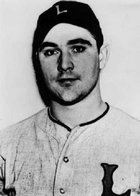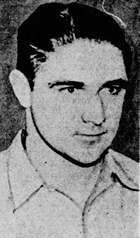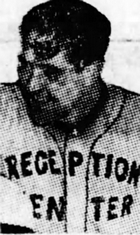Gene Stack
| Date and Place of Birth: | December 14, 1918 Saginaw, MI |
| Date and Place of Death: | June 26, 1942 Michigan City, IN |
| Baseball Experience: | Minor League |
| Position: | Pitcher |
| Rank: | Corporal |
| Military Unit: | US Army |
| Area Served: | United States |
Stackie, who was a smiling youngster with a world of promise
became not only the first major leaguer to be drafted but also the first
to die in service.
Francis Sargent, Lowell Sun July 7, 1942
Gene Stack (born Eugene F. Stachowiak) signed a professional contract
with the Chicago White Sox in 1940, and was assigned to the Lubbock
Hubbers of the Class D West Texas-New Mexico League, where he had a
sensational rookie season. In 31 games, he had a 19-11 record and 3.84
ERA, and his 238 strikeouts were second highest in the league. "I was 13
that summer," recalled Bill Cope of Lubbock. "We had a sandlot baseball
league of four or five teams and played on a field across from the old
Texas Tech gymnasium. Somehow, Gene Stack and another Hubber, Steve
Sakas, learned about the games and started coming there some afternoons
when they were in town and watched and encouraged us and gave us some
pointers. We thought this was great because these were real
professionals and our idols and we were at the ballpark for just about
every Hubbers' game." [1]
Despite Stack's 19 wins, Pat Ralsh's career-best 20 victories and Ed
Schweda's leaguetopping .422 batting average, the Hubbers only managed a
third place finish behind Pampa and Amarillo, but it was enough to get
in the playoffs. Playing the Amarillo Gold Sox, the Hubbers swept the
first round playoff series in three games with Stack beating the Gold
Sox, 7-5, in the opening game on September 5. The Hubbers then faced the
fourth-placed Borger Gassers in the finals. The Hubbers took the first
game, 7-6, and Stack won the second game, 14-0, on September 9, allowing
just four hits. The Gassers bounced back to win the next three games but
were again halted by Stack, who hurled a 9-1 win in the sixth game on
September 13, in front of an overflow crowd that lined both sides of the
playing field. Stack struck out seven that day and allowed seven hits.
The championship, however, was clinched by the Gassers the following day
as Robert Crues hurled a 5-0 shutout.
Chicago White Sox manager Jimmy Dykes was singing the youngster's
praises at the end of the season and announced in December 1940 that he
was inviting Stack to join the White Sox at their 1941 Pasadena,
California, training camp. In the meantime, however, Stack received his
military draft notice and was ordered to report for duty at Fort Custer
in Battle Creek, Michigan, on January 7, 1941, making him technically
the first player from a major league roster to be drafted by the
military.
To the professional baseball world it may have seemed that the young
hurler had swapped flannels for khakis, but Stack still found plenty of
time for baseball. He became a mainstay of the Fort Custer Reception
Center team. With a line-up that included the Tigers' Hank Greenberg,
and minor leaguers Bob Ogle, Truman Connell and Jack Egan, the team was
coached by Captain George Zegolis, former Wayne University player, and
won the national amateur championship of the American Baseball Congress
on September 29, 1941, with a 3-2 win over Charlotte, North Carolina.
[2]
Stack married Burchette Ellison of Lubbock, Texas, in April 1942, and
continued to hurl for the Fort Custer team during his second year in
military service. On Friday, June 26, 1942, the team traveled to
Michigan City, Indiana, for an evening game against the semi-pro
Michigan City Cubs who, earlier that year, had unsuccessfully bid for a
place in Organized Baseball's Michigan State League. Stack had an
unusual off night, allowing eight hits in a 5-2 loss. On the way back to
camp late that night, the team stopped for something to eat at the
Gingham Inn on Highway 12, four miles west of Michigan City. Stack got up from his
table, walked over to the jukebox and inserted a couple of coins before
returning to his seat, where he promptly slumped to the floor. The
24-year-old pitcher was dead.
At the time, it was believed Stack had suffered a heart attack, but it
was later revealed by Lieutenant-Colonel Harry R. Brown, executive
officer at Fort Custer, that an autopsy disclosed he had actually died
from pneumonia. [3]
|
Year |
Team |
League |
Class |
G |
IP |
ER |
BB |
SO |
W |
L |
ERA |
| 1940 | Lubbock | W. Texas-New Mexico | D | 31 | 246 | 105 | 121 | 238 | 19 | 11 | 3.84 |
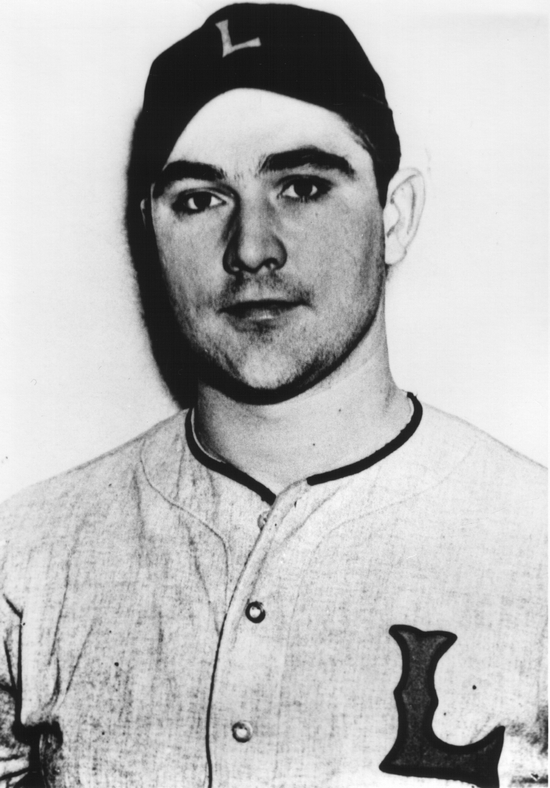
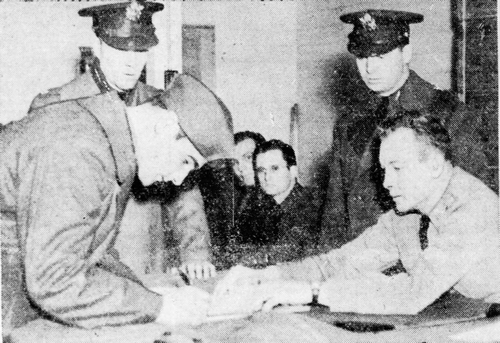
Gene Stack signing in at the Fort Custer Reception Center in January 1941
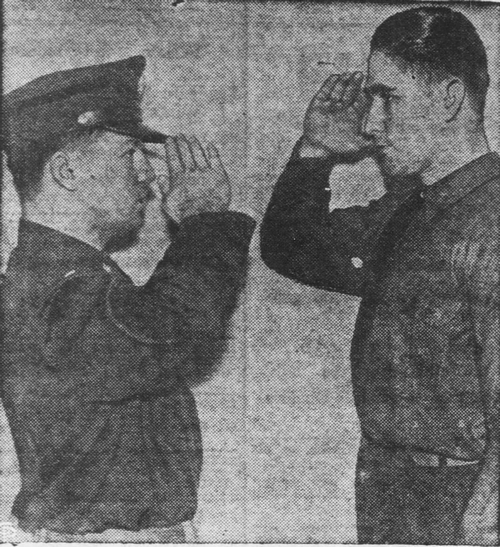
Gene Stack (right) salutes Captain George Zegolis at Fort Custer
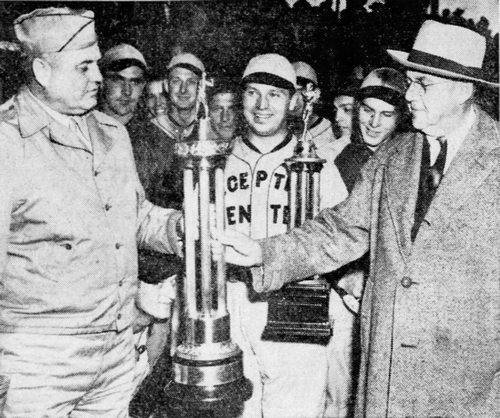
Lt. Col. Hammond D. Birks, commanding officer of the Reception Center at Fort Custer, receives the Bailey Trophy for clinching the American Baseball Congress (ABC) championship of 1941 from H. Arthur Smith of the ABC. Gene Stack is just behind Lt. Col. Birks.
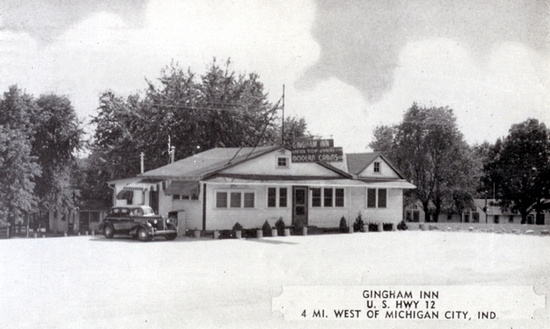
The Gingham Inn, where Gene Stack's life ended
Notes
1. www.baseballinwartime.com/in_memoriam/ stack_gene.htm. Retrieved
November 11, 2008.
2 1941 was the last time the amateur world series was held until after
the war.
3. El Paso Herald-Post, June 30, 1942.
Thanks to Bill Cope of Lubbock, Texas for help with this biography. Thanks also to Astrid van Erp for help with photos for this biography.
Date Added: March 17, 2012 Updated August 3, 2017
Baseball's Greatest Sacrifice is associated with Baseball Almanac
Baseball's Greatest Sacrifice is proud to be sponsored by

